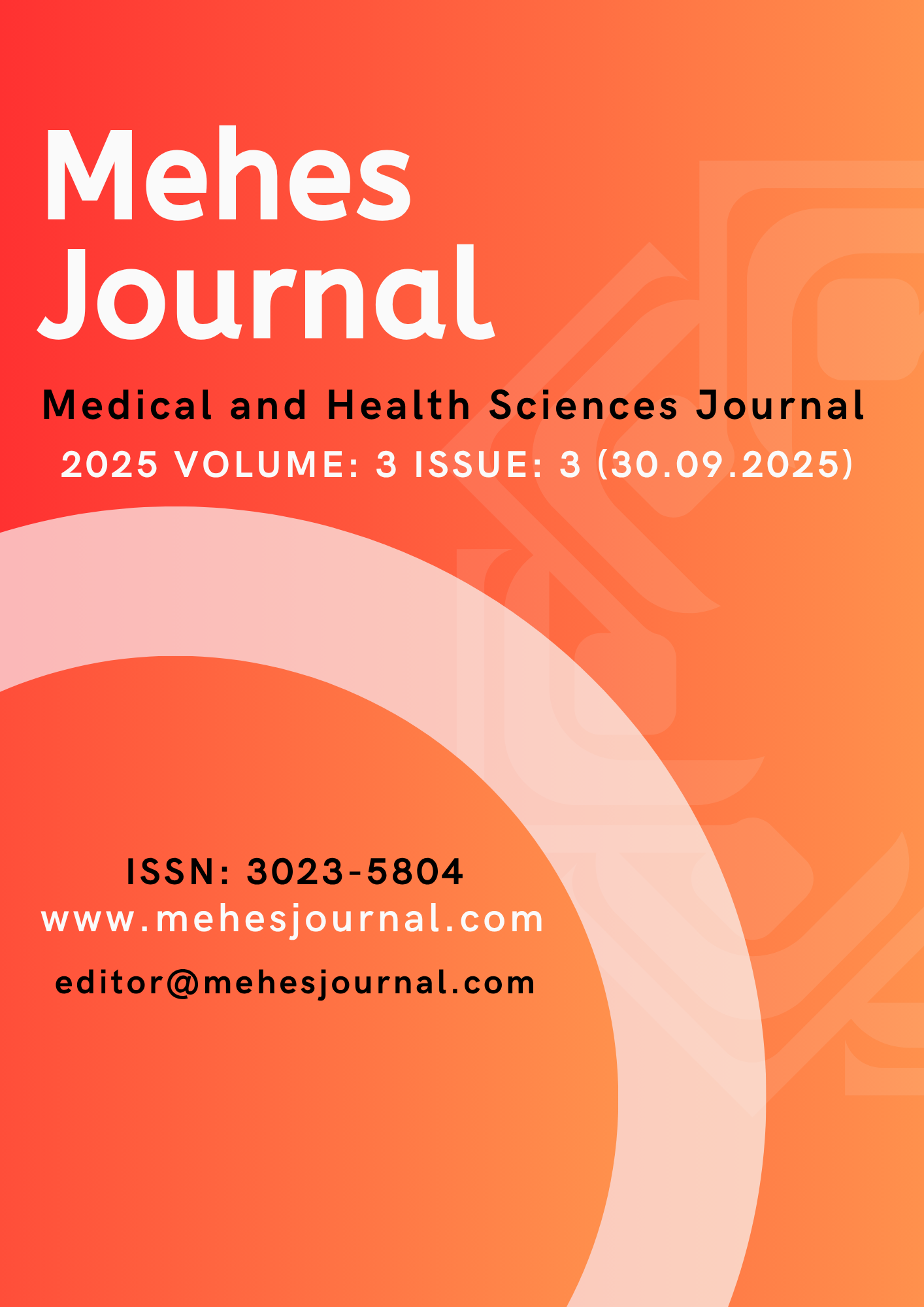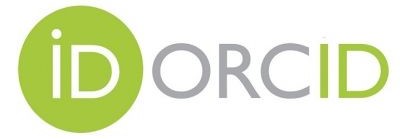A Study on the Cytotoxic Effects of Some Haplophyllum Species of the Rutaceae Family: H. Gilesii, H. Tuberculatum, H. Myrtifolium, H. Megalanthum, H. Buxbaumii, H. Acutifolium and H. Vulcanicum
DOI:
https://doi.org/10.5281/zenodo.17251664Keywords:
Phytochemical compounds, Haplophyllum species, Cancer cell lines, Selective anticancer activity, CytotoxicityAbstract
Objective: To summarize the phytochemical diversity and potential cytotoxic/antiproliferative effects of the genus Haplophyllum (H. gilesii, H. tuberculatum, H. myrtifolium, H. megalanthum, H. buxbaumii, H. acutifolium, H. vulcanicum) of the Rutaceae family on cancer cell lines in the light of the current literature and to identify research gaps.
Material and Methods: This study is a review. A structured search was conducted in international databases (e.g., PubMed, Scopus, Web of Science) using relevant species names and keywords such as “Haplophyllum,” “phytochemistry,” “coumarin/alkaloid/lignan/flavonoid,” “cytotoxicity,” “antiproliferative,” “apoptosis,” and “IC50.” The search focused on original research, isolation/chemical characterization, and in vitro biological activity studies.
Results: Haplophyllum species are rich in coumarins, alkaloids, lignans, and flavonoids; these classes have been shown to be associated with antiproliferative and apoptotic responses in tests such as MTT, WST-1, and brine shrimp. H. acutifolium and H. buxbaumii, in particular, stand out for their selective cytotoxicity, while low IC₅₀ values for some compounds isolated from H. megalanthum indicate high anticancer potential. Their activity profiles vary in accordance with the phytochemical diversity of the species.
Discussion and Conclusion: Literature indicates that Haplophyllum species offer strong candidates for pharmaceutical research. Their selective activity and low IC₅₀ values are promising for drug discovery. However, standardized extraction/experimental designs, mechanistic validation (target/pro-apoptotic pathways), and in vivo/ADME toxicity data are limited. Future studies should focus on target identification and structure-activity analysis at the pure compound level, with sustainable sampling while considering the conservation of biodiversity.
References
Mitra JR, Eira BN, Bhawmick AK, Remon MKI, Enan ME, Muhit MA, et al. Phytochemical and pharmacological aspects of genus haplophyllum (Rutaceae): A review. International journal of health sciences.6(S9):4454-85.
Ulubelen A, Öztürk M. Alkaloids, coumarins and lignans from Haplophyllum species. Rec Nat Prod. 2008;2(3):54-69.
CC T. Taxonomic revision of the genus Haplophyllum (Rutaceae). Hooker’s icones plantarum vol 40, parts 1, Bentham-Moxon Trustees Royal Botanical Gardens, Kew. 1986.
Colombo P, Gunnarsson K, Iatropoulos M, Brughera M. Toxicological testing of cytotoxic drugs. International journal of oncology. 2001;19(5):1021-8.
Bácskay I, Nemes D, Fenyvesi F, Váradi J, Vasvári G, Fehér P, et al. Role of cytotoxicity experiments in pharmaceutical development. Cytotoxicity. 2018;8:131-46.
Razzakova D, Bessonova I, Yunusov SY. Alkaloids of Haplophyllum acutifolium. Chemistry of Natural Compounds. 1973;9:199-202.
Saglam H, Gozler T, Kivcak B, Demirci B, Baser K. Volatile compounds from Haplophyllum myrtifolium. Chemistry of Natural Compounds. 2001;37:442-4.
Mohammadhosseini M, Nekoei M, Mashayekhi HA, Aboli J. Chemical composition of the essential oil from flowers, leaves and stems of Haplophyllum perforatum by using head space solid phase microextraction. Journal of Essential Oil Bearing Plants. 2012;15(4):506-15.
Yari M, Masoudi S, Rustaiyan A. Essential oil of Haplophyllum tuberculatum (Forssk.) A. Juss. grown wild in Iran. Journal of Essential Oil Research. 2000;12(1):69-70.
Ünver-Somer N, Kaya Gİ, Sarikaya B, Önür MA, Özdemir C, Demirci B, et al. Composition of the essential oil of endemic Haplophyllum megalanthum Bornm. from Turkey. Records of Natural Products. 2012;6(1):80.
Nesmelova E, Razakova D, Akhmedzhanova V, Bessonova I. Diphyllin from Haplophyllum alberti-regelii, H. bucharicum, and H. perforatum. Chemistry of Natural Compounds. 1983;19(5):608-.
Hanahan D, Weinberg RA. Hallmarks of cancer: the next generation. cell. 2011;144(5):646-74.
Kola I, Landis J. Can the pharmaceutical industry reduce attrition rates? Nature reviews Drug discovery. 2004;3(8):711-6.
Sabry OMM, El Sayed AM, Alshalmani SK. GC/MS analysis and potential cytotoxic activity of Haplophyllum tuberculatum essential oils against lung and liver cancer cells. Pharmacognosy Journal. 2016;8(1).
Asili J, Fard MR, Ahi A, Emami SA. Chemical composition of the essential oil from aerial parts of Haplophyllum acutifolium (DC.) G. Don from Iran. Journal of Essential Oil Bearing Plants. 2011;14(2):201-7.
Gözler B, Rentsch D, Gözler T, Ünver N, Hesse M. Lignans, alkaloids and coumarins from Haplophyllum vulcanicum. Phytochemistry. 1996;42(3):695-9.
Batirov EK, Batsuren D, Malikov V. Components of Haplophyllum dauricum. Chemistry of Natural Compounds. 1984;20(2):226-7.
Yuldashev M. Flavonoids of Haplophyllum foliosum and H. pedicellatum. Chemistry of natural compounds. 2001;37:288-9.
Batirov EK, Yuldashev M, Khushbatkova Z, Syrov V, Malikov V. Flavonoids of Haplophyllum perforatum. Structure and hypoazotemic activity of haploside C. Chemistry of Natural Compounds. 1987;23:54-7.
Biniyaz T, Habibi Z, Masoudi S, Rustaiyan A. Composition of the essential oils of Haplophyllum furfuraceum Bge. ex Boiss. and Haplophyllum virgatum Spach. from Iran. Journal of Essential Oil Research. 2007;19(1):49-51.
Zengin G, Sarikurkcu C, Aktumsek A, Ceylan R, Ceylan O. A comprehensive study on phytochemical characterization of Haplophyllum myrtifolium Boiss. endemic to Turkey and its inhibitory potential against key enzymes involved in Alzheimer, skin diseases and type II diabetes. Industrial Crops and Products. 2014;53:244-51.
Javidnia K, Miri R, Soltani M, Varamini P. Volatile constituents of two species of Haplophyllum A. Juss. from Iran [H. lissonotum C. Town. and H. buxbaumii (Poir.) G. Don. subsp. mesopotamicum (Boiss.) C. Town.]. Journal of Essential Oil Research. 2009;21(1):48-51.
Esmaeili S, Hamzeloo-Moghadam M, Ghaffari S, Mosaddegh M. Cytotoxic activity screening of some medicinal plants from south of Iran. Research Journal of Pharmacognosy. 2014;1(4):19-25.
Alam J, Ali S. Contribution to the red list of the plants of Pakistan. image. 2025;42.
Kausar R, Shah AH, Jabeen T, Alam J, Ali N, Majid A, et al. Ex-situ conservation of Haplophyllum gilesii: a critically endangered and narrow endemic species of the Karakoram range. Pak J Bot. 2019;51(1):225-33.
Ashfaq S, Hussain M, Bibi N, Alam J, Junaid M, Rehman S. Antimicrobial and cytotoxic potential of Haplophyllum gilesii (Hemsl.) CC from Northern Pakistan. Pakistan Journal of Agricultural Research. 2019;33(1):146-53.
POWO. Plants of the World Online. Haplophyllum Gilesii: Royal Botanic Gardens, Kew; 2025 [Available from: https://powo.science.kew.org/taxon/urn:lsid:ipni.org:names:773868-1.
Al-Burtamani SKS, Fatope MO, Marwah RG, Onifade AK, Al-Saidi SH. Chemical composition, antibacterial and antifungal activities of the essential oil of Haplophyllum tuberculatum from Oman. Journal of ethnopharmacology. 2005;96(1-2):107-12.
Hamdi A, Bero J, Beaufay C, Flamini G, Marzouk Z, Vander Heyden Y, et al. In vitro antileishmanial and cytotoxicity activities of essential oils from Haplophyllum tuberculatum A. Juss leaves, stems and aerial parts. BMC Complementary and Alternative Medicine. 2018;18:1-10.
Ulukuş D. Türkiye Haplophyllum A. Juss. ve Ruta L. cinslerinin (Rutaceae) taksonomik, morfolojik, anatomik ve moleküler revizyonu. 2015.
Akyol Y, Alçıtepe E, Özdemir C. The morphological, anatomical and palynological properties of endemic Haplophyllum megalanthum Bornm.(Rutaceae). Pakistan Journal of Botany. 2012;44(3):1121-6.
Demir S, Petersen MJ, Kjaerulff L, Unver-Somer N, Staerk D. Cytotoxicity of endemic Haplophyllum megalanthum Bornm. and its newly isolated alkaloids and lignans. Biochemical Systematics and Ecology. 2024;117:104901.
Kazımoğlu H, Kaplan HM. Apoptotic Effect of Haplophyllum Buxbaumii Extract on Prostate Cancer. 2020.
Akçiçek D. Haplophyllum buxbaumii bitkisinin kolon kanseri hücreleri üzerindeki antikanser etkisinin incelenmesi/Investigation of the antianmal effects of haplophyllum buxbaumii plant on colon cancer cells 2019.
Staerk D, Kesting JR, Sairafianpour M, Witt M, Asili J, Emami SA, et al. Accelerated dereplication of crude extracts using HPLC–PDA–MS–SPE–NMR: Quinolinone alkaloids of Haplophyllum acutifolium. Phytochemistry. 2009;70(8):1055-61.
Varamini P, Doroudchi M, Mohagheghzadeh A, Soltani M, Ghaderi A. Cytotoxic evaluation of four haplophyllum. species with various tumor cell lines. Pharmaceutical Biology. 2007;45(4):299-302.
Ulukuş D, Tugay O, Celep F. Morphology, anatomy and palynology of Turkish endemic species Haplophyllum myrtifolium, H. vulcanicum & H. megalanthum (Rutaceae) and their systematics implications. Phytotaxa. 2016;247(3):197-209.
Karahisar E, Tugay O, Orhan IE, Sezer Senol Deniz F, Vlad Luca S, Skalicka‐Wozniak K, et al. Metabolite Profiling by Hyphenated Liquid Chromatographic Mass Spectrometric Technique (HPLC‐DAD‐ESI‐Q‐TOF‐MS/MS) and Neurobiological Potential of Haplophyllum sahinii and H. vulcanicum Extracts. Chemistry & Biodiversity. 2019;16(9):e1900333.
Downloads
Published
How to Cite
Issue
Section
License
Copyright (c) 2025 MEHES JOURNAL

This work is licensed under a Creative Commons Attribution 4.0 International License.










